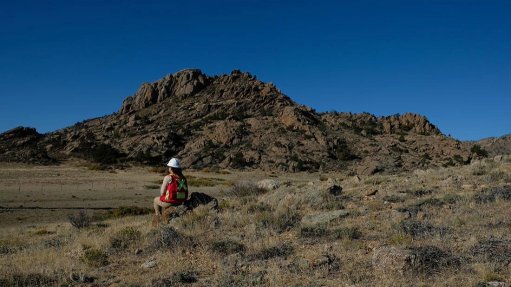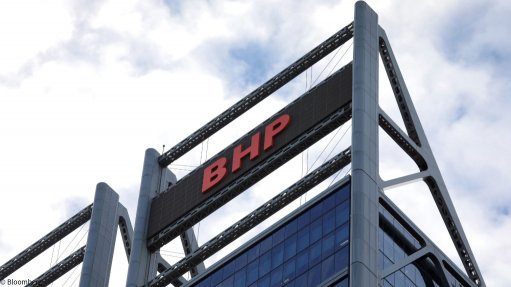Mines embrace digital transformation
The mining industry in South Africa has embraced digital transformation, according to corporate and commercial law firm Werksmans Attorneys head of regulatory Ahmore Burger-Smidt.
South Africa’s mining industry uses digital mediums, such as machine learning, Big Data and artificial intelligence (AI), for forecasting, diagnosis, classification tasks and increasing safety.
With the trend of implementing Industry 4.0 in the mining sector, and the increasingly improved monitoring of data, there is a strong requirement to transform this data into meaningful and actionable knowledge, which can be used to increase productivity and efficiency.
However, she says, in terms of the Protection of Personal Information Act (Popia), No 4 of 2013, it is of “paramount importance” that while AI and Big Data are developed and more frequently used, organisations ensure that they adhere to their legal obligations in this regard.
The use of AI and Big Data has had a positive impact on many industries and has empowered organisations to modernise and streamline business operations, where organisations have previously hired experts to manually sift through large quantities of data.
Burger-Smidt notes that Big Data now provides an avenue that can analyse reams of data with software algorithms and provide more precise coding of documentation, while also eradicating the tendency for human error.
“What is probably the most significant for AI in the mining industry is the benefit it provides regarding safety of its employees. Safety is a legal requirement in the mining industry imposed on employers by the Occupational Health and Safety Act, No 85 of 1993 (OHSA),” she explains.
Machine learning and AI can serve the mine administration and mitigate the dangers recognised in the mining industry by providing effective risk assessment, decrease labour exposure to risks and reduce costs, says Burger-Smidt.
How AI increases Safety in Mines
The fundamental aim of using AI is to collect and share real-time data by using various algorithms to make efficient decisions, such as alerting workers about critical situations, and for example, assisting mining companies to mine coal in hard-to-reach places, she notes.
Burger-Smidt elaborates that AI can further assist in creating operational efficiency, reduce manpower required and aid in safety compliance and regulatory requirements. This all results in improved cost control regarding mineral exploitation, and also enhances competitiveness and production output.
Companies have developed “Life” wearable gear incorporating sensors that gather data on the wearer’s brain activity, and can be useful for applications such as monitoring equipment operators and determining fatigue of miners.
The wearable gear developed by Expert Mining Solutions is said to detect fatigue with an accuracy levels of about 95%. This system measures brainwaves of the wearer and stores their data for medical analysis. It is also able to detect dietary or medical conditions.
Once this device is deployed, it is geared toward reducing the chance of accidents and collects data which may help the diagnosis of illnesses, aiding timely treatment.
If these wearable technologies are successful, she says they may address many of the challenges of safety, occupational health and communication at mining sites, facilitating employers in OHSA compliance and transforming the notion of a hazardous mine into a modern and safe work environment with increased production and efficiency.
Meanwhile, in terms of compliance with Popia, Burger-Smidt says it is essential that all the data being collected is handled and processed.
Owing to the sensitive nature of personal information, she notes that organisations must ensure that the data entrusted to them is safe from exposure or breaches by unauthorised third parties.
Comments
Press Office
Announcements
What's On
Subscribe to improve your user experience...
Option 1 (equivalent of R125 a month):
Receive a weekly copy of Creamer Media's Engineering News & Mining Weekly magazine
(print copy for those in South Africa and e-magazine for those outside of South Africa)
Receive daily email newsletters
Access to full search results
Access archive of magazine back copies
Access to Projects in Progress
Access to ONE Research Report of your choice in PDF format
Option 2 (equivalent of R375 a month):
All benefits from Option 1
PLUS
Access to Creamer Media's Research Channel Africa for ALL Research Reports, in PDF format, on various industrial and mining sectors
including Electricity; Water; Energy Transition; Hydrogen; Roads, Rail and Ports; Coal; Gold; Platinum; Battery Metals; etc.
Already a subscriber?
Forgotten your password?
Receive weekly copy of Creamer Media's Engineering News & Mining Weekly magazine (print copy for those in South Africa and e-magazine for those outside of South Africa)
➕
Recieve daily email newsletters
➕
Access to full search results
➕
Access archive of magazine back copies
➕
Access to Projects in Progress
➕
Access to ONE Research Report of your choice in PDF format
RESEARCH CHANNEL AFRICA
R4500 (equivalent of R375 a month)
SUBSCRIBEAll benefits from Option 1
➕
Access to Creamer Media's Research Channel Africa for ALL Research Reports on various industrial and mining sectors, in PDF format, including on:
Electricity
➕
Water
➕
Energy Transition
➕
Hydrogen
➕
Roads, Rail and Ports
➕
Coal
➕
Gold
➕
Platinum
➕
Battery Metals
➕
etc.
Receive all benefits from Option 1 or Option 2 delivered to numerous people at your company
➕
Multiple User names and Passwords for simultaneous log-ins
➕
Intranet integration access to all in your organisation


















